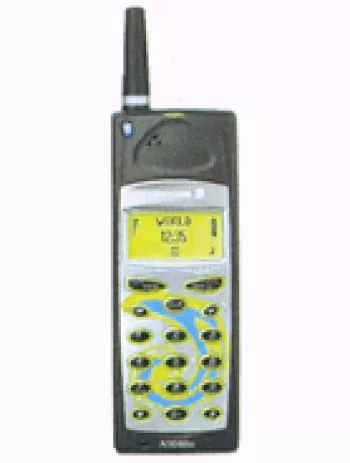
Introduction to Ericsson GF 788e
The Ericsson GF 788e, introduced in 1997, stands as a notable example of mobile technology during a transformative period in communication history. This feature phone represented a blend of functionality and simplicity, providing basic mobile communication capabilities without the complexities of modern smartphones.
Design and Build
Designed with practicality in mind, the Ericsson GF 788e featured a compact form factor. Its dimensions were 105 x 49 x 24 mm, making it relatively easy to carry in an era when mobile phones were more about utility than style. The weight of the device was 135 g, which was considered lightweight for phones at that time. The phone featured a Mini-SIM slot, adhering to the standards of the era.
Display
The display of the Ericsson GF 788e was simple, with an alphanumeric screen capable of displaying 1 x 10 characters. This basic display was sufficient for showing phone numbers and contact names, aligning with the phone's focus on voice communication rather than multimedia capabilities.
Network and Connectivity
The GF 788e supported GSM 900 technology, which was the prevalent mobile network standard in the late 1990s. It did not have capabilities for GPRS or EDGE, reflecting its primary use for voice calls. Connectivity options were minimal, as mobile internet had not yet become a standard feature in phones of this era.
Memory and Storage
The phone could store up to 99 contacts in its phonebook. It did not support memory expansion through card slots. This limitation was typical of the time since mobile phones were primarily used for voice calls and basic messaging, with no need for extensive data storage.
Sound and Alerts
Sound functionalities were simple, featuring monophonic ringtones and a composer for creating custom tones. The phone did not have a loudspeaker or a 3.5mm jack, indicative of its straightforward focus on delivering essential telecommunication services without additional multimedia features.
Communication Features
For messaging, the GF 788e supported SMS, allowing users to send and receive text messages. Other software features included a clock and an alarm, which were basic yet essential functionalities. The phone supported 19 languages, catering to various regions and users worldwide, though it did not feature games or a Java platform.
Battery Life
The device was powered by a removable NiMH battery with a capacity of 550 mAh. The battery offered a standby time of up to 60 hours and a talk time of approximately 180 minutes. These figures reflect the device's primary focus on voice calls, with power consumption optimized for such tasks rather than multimedia or data services.
Usage and Impact
The Ericsson GF 788e served as a reliable communication tool during its time. It was particularly valued by users who needed a robust and straightforward device for making phone calls. Its lack of sophisticated features can be seen as an advantage, as it ensured ease of use without overwhelming users with unnecessary complexity.
Conclusion
The Ericsson GF 788e is a memorable device from the late 1990s, representing a period when mobile phones began becoming mainstream. Although technology has drastically evolved since then, devices like the GF 788e paved the way for the development of more advanced mobile technologies. Reflecting on such devices offers insight into how far mobile technology has come, underscoring the rapid pace of innovation in the telecommunications industry.
Main Features of Ericsson GF 788e
- Compact Dimensions: 105 x 49 x 24 mm
- Lightweight Design: 135 g
- GSM Technology
- Mini-SIM Support
- Alphanumeric Display
- Phonebook Capacity: 99 contacts
- Monophonic Ringtones with Composer
- SMS Messaging
- Clock and Alarm Features
- Supports 19 Languages
- Removable NiMH 550 mAh Battery
Disadvantages of Ericsson GF 788e
- Limited network support: GSM 900 only, with no GPRS or EDGE.
- No internet connectivity: Lacks WLAN, Bluetooth, and USB features.
- Poor display: Alphanumeric and very limited resolution with 1 x 10 characters.
- Minimal phonebook capacity: Can only store 99 contacts.
- No camera support.
- No loudspeaker or 3.5mm jack for audio.
- No multimedia features: Lacks radio and games.
- Limited battery life: Only 60 hours standby and 180 minutes talk time with a 550 mAh battery.
- Discontinued product: No longer available for purchase or support.
View Also
More Phones
All Rights Reserved +14266 Phones © Mobilawy 2025

























